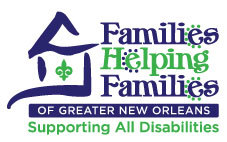What is Self-Advocacy, and Why is It Important?
Wrightslaw answers these two questions quite succinctly, so we’re going to quote from them. Speaking directly to those with disabilities but relevant to all of us:
What is Self-Advocacy?
Self-Advocacy is learning how to speak up for yourself, making your own decisions about your own life, learning how to get information so that you can understand things that are of interest to you, finding out who will support you in your journey, knowing your rights and responsibilities, problem-solving, listening and learning, reaching out to others when you need help and friendship, and learning about self-determination.
Why is Self-Advocacy Important?
So that you have the knowledge needed to succeed and are given the chance to participate in decisions that are being made about your life.
Parents may need some orientation to this topic, too. Here’s one such resource.
Training Video on Self-Determination.
Especially for parents (25 minutes) | Available in English and Spanish.
Do you want to help your child with a disability live an included and productive life? Your son or daughter needs self-determination skills such as making choices, setting goals, and self-advocacy. The Self-Determination video will provide you with a foundation of how to teach these skills to your son or daughter. Also available in Spanish (Cómo ayudar a nuestros hijos a desarrollar su auto determinación). From the Utah Parent Center.
Resources for Youth Themselves
There are resources about self-advocacy for parents, families, and service providers, but what about resources that speak directly to the young person with a disability? Fortunately, there are many. We’ve listed a few starters below (believe us, there are more!). Access them, share them, use them with young people with disabilities.
Learn about Self-Advocacy: Speaking Up.
For youth with intellectual disabilities.
This resource-rich website pairs minimal text with short, step-by-step video clips of youth discussing self-advocacy. Includes a map to help youth identify self-advocacy groups in their state. Lots of video stories from self-advocates on key topics such as the ADA, education, jobs, health, home, and self-determination.
Youth Leadership! 4 Steps for Stronger Self-Advocacy.
Speaking directly to young adults with disabilities, this resource defines self-advocacy, describes why it’s important, and suggests four steps to becoming a stronger self-advocacy. Youth-friendly, brief, and to the point, this resource is a product of the National Collaborative on Workforce and Disability for Youth (NCWD/Youth).
Youthhood.org.
Youthhood is a not-to-be-missed website for youth. This fun and engaging site will remind students with disabilities that they are not alone as they explore the community and build a future. It’s chock-full of great resources and information. Introduce young people to the site by starting with “What Can I Do Here?“
Self-Advocacy: Find the Captain in You!
Video (10 minutes) | A funny and fun way to introduce self-advocacy to young people with disabilities.
Follow two hosts with dry humor on their morning news talk show, Midday In The Valley, as they explore and discover the powerful force of a term called: Self Advocacy. Covering two interviews and speaking with their ever-helpful sidekick, Captain Self Advocacy (yes, he is really wearing tights!), they come to understand why understanding what you’re good at, what you need assistance with, and how to communicate with people in life effectively is very important for everyone, especially youth with disabilities. Remember: Nothing About You Without You!
Fact Sheets, Toolkits, and Training Materials on Self-Advocacy
Oh, where to start, and what to list? There’s an amazing amount of materials out there designed to help schools and families prepare young people with disabilities to advocate for themselves. In fact, many more than we will list here. We know you haven’t got all day, so start with these resources and see how they fit your learning and training needs.
Whose Future Is It Anyway? (2nd edition)
Subtitled “A Student-Directed Transition Planning Process,” Whose Future Is It Anyway? helps prepare students for their IEP meetings and gain self-determination skills through six sections that contain 36 lesson sessions. The lesson package comes with a Coach’s Guide that outlines the lessons, how to teach them, the roles of the students and teachers, as well as expected outcomes.
Building Self-Advocacy and Self-Care Management Skills.
Here’s a handy list of suggestions and insights for parents to build their youth’s self-advocacy skills at home, especially with respect to health care and management. There are several videos, too.
Youthhood’s Curriculum Guide.
Youthhood.org’s purpose is to help young adults plan for life after high school. The site also offers information, links, and interactive activities for adults who work directly with youth (including but not limited to teachers, youth workers, community leaders, parents, and other adult family members) to help youth plan for their futures. It can be used as a “stand-alone” curriculum or as a supplement to an established curriculum.
My Health, My Choice, My Responsibility.
My Health, My Choice, My Responsibility is an 8-session curriculum-based group training program focusing on advocating for healthy choices on a daily basis. The emphasis is on gaining knowledge to make informed choices and the skills and tools needed to speak up for good health. Topics include being a self-advocate at medical appointments, physical activity, nutrition, being safe and healthy at home, and feelings. Participants learn the material through discussions, exercises, and visual aids.
Personal Preferences Indicator: A Guide for Planning.
For use with individuals with significant developmental disabilities | Available in English and Spanish.
This is a tool to assist in planning with and for a person with a developmental disability. It’s a guide, not a checklist, for accessing information about the person’s preferences across 7 domain areas. The items are used as cues or prompts for discussing with the person or their family/friends the important considerations in developing a plan of support. Domains explored include the individual’s favorites, emotions, socialization, self-determination, physical self, health, and family roles. Also available in Spanish | Los Indicatores de Preferencias Personales: Una Guía para Planear.
Source: Center for Parent Information & Resources
Updated: 4/12/2023
